|
|
|
|
 |
Baldassarre Peruzzi
|
|
(7 March 1481 - 6 January 1536) was an Italian architect and painter, born in a small town near Siena and died in Rome. He worked for many years, beginning in 1520, under Bramante, Raphael, and later Sangallo during the erection of the new St. Peter's. He returned to his native Siena after the Sack of Rome (1527) where he was employed as architect to the Republic. For the Sienese he built new fortifications for the city and designed (though did not build) a remarkable dam on the Bruna River near Giuncarico. He seems to have moved back to Rome by 1535.
He was a painter of frescoes in the Cappella San Giovanni in the Duomo of Siena.
His son Giovanni Sallustio was also an architect.
|
|
|
|
 |
Baldung
|
|
b.c. 1484, Schwäbisch Gm??nd, W??rttemberg [Germany]
d.1545, Imperial Free City of Strasbourg [now Strasbourg, Fr.]
Hans Baldung Gallery |
|
|
|
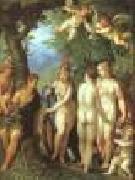 |
BALEN, Hendrick van
|
|
Dutch Baroque Era Painter, ca.1575-1632
Hendrik van Balen (1575 - 1632) was a Flemish painter, who was born and died in Antwerp. Van Balen studied art while traveling in Italy. He was the teacher of Anthony Van Dyck and Frans Snyders and was also a contemporary of many of the other famous Flemish artists, such as the Brueghels, Jan and Peter. |
|
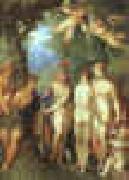 |
Balen, Hendrick von
|
|
Dutch, approx. 1575-1632
Hendrik van Balen
Students included Anthony Van Dyck, Frans Snyders and Gerard Seghers
|
|
|
|
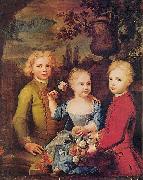 |
Balthasar Denner
|
|
(15 November 1685 in Altona - 14 April 1749 in Rostock) was a German painter, highly-regarded as a portraitist. He painted mostly half-length and head-and-shoulders portraits and a few group portraits of families in interiors. Usually Denner concentrated on the face; clothes and paraphernalia were done by other painters or later his daughter. |
|
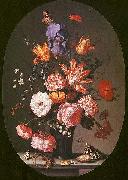 |
Balthasar van der Ast
|
|
(1593/94 - 1657) was a Dutch Golden Age painter who specialized in still lifes of flowers and fruit, as well as painting a number of remarkable shell still lifes; he is considered to be a pioneer in the genre of shell painting. His still lifes often contain insects and lizards. He was born in Middelburg and died at Delft.
|
|
|
|
 |
Barabas Miklos
|
|
(February 10, 1810 in Mărcuşa, now Romania - February 12, 1898 in Budapest) was a Hungarian painter. He his mostly known for his portrait paintings.
He was born in Kezdimerkosfalva. He spent most of his life in Pest, where he was director of the art society from 1862 until his death. He became a member of the Parliament of Hungary in 1867. He died in Budapest.
|
|
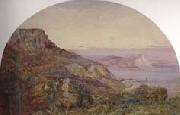 |
Barbara Bodichon
|
|
1827-1891
was an English educationalist, artist, and a leading early nineteenth century feminist and activist for women's rights. She was the illegitimate child of Anne Longden, a 25-year-old milliner from Alfreton, and Benjamin Leigh Smith (1783-1860) , an MP's only son, who was himself a Radical MP for Norwich. Benjamin (Ben) had four sisters. One, Fanny Smith, married into the Nightingale family and produced a daughter, Florence Nightingale; another married into the Bonham-Carter family. Ben's father wanted him to marry Mary Shore, the sister of William Nightingale, now an in law by marriage Ben Smith's home was in Marylebone, London, but from 1816 he inherited and purchased property near Hastings: Brown's Farm near Robertsbridge, with a house built around 1700 (extant), and Crowham Manor, Westfield, which included 200 acres. Although a member of the landed gentry, Smith held radical views. He was a Dissenter, a Unitarian, a supporter of Free Trade, and a benefactor to the poor. In 1826 he bore the cost of building a school for the inner city poor at Vincent Square, Westminster, and paid a penny a week towards the fees for each child, the same amount as paid by their parents. On a visit to his sister in Derbyshire in 1826 Smith met Anne Longden, a 25-year-old milliner from Alfreton. She became pregnant and Smith took her to a rented lodge at Whatlington, a small village near Battle, East Sussex. There she lived as 'Mrs Leigh', the surname of Ben Smith's relations on the Isle of Wight. Barbara's birth created a scandal because the couple did not marry. Smith rode on horseback from Brown's Farm to visit them daily, and within eight weeks Anne was pregnant again. When little Ben was born the four of them went to America for two years, during which time another child was conceived. On their return to Sussex they lived openly together at Brown's, and had two more children. After their last child was born, in 1833, Anne became ill with tuberculosis and Smith leased 9 Pelham Crescent, which faced the sea at Hastings |
|
 |
BARBARI, Jacopo de
|
|
Italian Early Renaissance Painter, ca.1440-1515
Italian painter and printmaker. He was the first Italian Renaissance artist of note who travelled to the courts of Germany and the Netherlands. His earliest known works appear to date from the late 1490s, suggesting that he was born c. 1460-70. The birthdate of c. 1440 traditionally assigned to him reflects the misinterpretation of a document of 1512 in which his patron, Margaret of Austria, Regent of the Netherlands, awarded him a stipend because of his 'weakness and old age'. In fact, at this date a man could be described as 'old' while in his fifties or even younger. |
|
 |
Bard, James
|
|
Specializes in Maritime Art
American Painter, 1815-1897 |
|
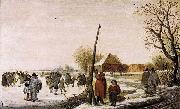 |
Barend Avercamp
|
|
(1612-1679) was a Dutch painter.
Avercamp was born in Kampen and was taught by his uncle Hendrick Avercamp, who was also a painter. Barent primarily painted scenes depicting Netherlands in winter. He was a member of the Guild of Saint Luke, and traveled around the Netherlands including Zwolle and Zutphen for his settings and inspiration.
|
|
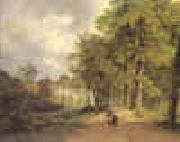 |
Barend Cornelis Koekkoek
|
|
1803-1862
Dutch
Barend Cornelis Koekkoek Gallery
Koekkoek??s own paintings reveal a careful study and synthesis of Dutch seventeenth century painters. His art is firmly rooted in the great Dutch romantic tradition established by the seventeenth-century masters: Hobbema, Cuyp, Ruisdael and Wynants. The golden light and the inclusion of travellers in his work suggests Koekkoek also admired the Dutch Italianate painters of the seventeenth century, collectively known as the Bamboccianti, especially Pieter van Laer and Jan Both.
Koekkoek imagined his pictures as the result of an ideal combination of observation and artifice. He studied art and nature with equal acuity, creating beautiful landscape paintings that celebrated the greatness of Creation. ??Koekkoek's work impresses the spectator by its power, by the firm and correct construction of the trees, by the broad, natural growth of the leaves and boughs, [and] by the careful and elaborate reproduction of the wooded landscape?? (G. H. Marius, Dutch Painters of the Nineteenth Century, Woodbridge, 1973, p. 89). Up to this day, Willem Koekkoek's work is very much favoured for the lively composition and the mood of nostalgia, in which the Dutch Golden Age seems to linger on. Just as he was during his own lifetime, Koekkoek is widely regarded as the most accomplished landscape painter of Dutch romanticism, against whose scrupulously refined paintings the work his contemporaries is measured.
|
|
|
|
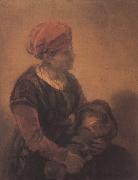 |
Barent fabritius
|
|
Dutch Baroque Era Painter, 1624-1673
Painter and draughtsman, brother of Carel Fabritius. Like Carel, he was first taught painting by his father, also learnt carpentry and practised as an artisan in Midden-Beemster in 1641. He is documented in Amsterdam in 1643 and 1647, though it is not known if, like his brother, he was also a pupil of Rembrandt. Nevertheless, his style is similar to that of the Rembrandt school. He must have been trained in the second half of the 1640s. His work is reminiscent of the style of his brother, who clearly influenced and may also have instructed him. In 1652 Barent lived in Amsterdam and married Catharina Mussers in Midden-Beemster. In the following years he is documented alternately in Midden-Beemster and Amsterdam. He painted a group portrait of the town master builder, Willem Leenderstsz. van der Helm and his Family (1656; Amsterdam, Rijksmus.), in Leiden, and in 1660-61 he received further commissions for the Lutheran church in Leiden. From 1669 Barent lived with his family in Amsterdam, where he died at the age of 49. He was buried in the churchyard in Leiden that was usually reserved for the poorer inhabitants of Amsterdam. |
|
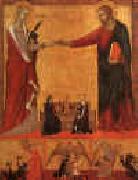 |
Barna da Siena
|
|
Italian Painter, active ca.1350
Barna da Siena, also known as Barna di Siena, was a Sienese painter active from about 1330 to 1350, and was the painter in Siena during this period. He learned his trade from Simone Martini. Barna is believed to have paint the frescoes depicting the life of Jesus in the Collegiata di San Gimignano and is generally credited with Christ Bearing the Cross, with a Dominican Friar in the Frick Collection in New York City. He was killed in a fall from the scaffolding. Barna's figures are more dramatic and vigorous than any in previous Sienese painting. |
|
 |
Barnaba Da Modena
|
|
active in Genoa and Pisa 1361-1383
was an Italian painter of the mid-14th century Lombardy. There is a painting by him in the church of San Francesco in Alba. A Virgin and Child once in Frankfort, was painted in a Byzantine style and is currently located at the Museum of Fine Arts in Boston, |
|
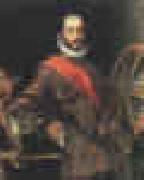 |
Barocci, Federico
|
|
Italian, 1535-1612
.Italian painter. The leading altar painter in Italy in the second half of the 16th century, he enjoyed a greater popularity and exerted a more profound influence on the art of his time than any of his contemporaries. His patrons included the Pope, Emperor, King of Spain and Grand Duke of Tuscany, and among his admirers were Lodovico Cigoli, Annibale Carracci, Rubens and Guido Reni. However, his work did not begin to receive the acclaim accorded that of Tintoretto or El Greco until the mid-20th century. Several factors have obscured his importance, notably the relative inaccessibility and scarcity of his painted works, most of which were done on commission for specific locations in remote parts of Italy (where they have remained), and the type of painting he produced, which was almost exclusively devoted to religious subjects. He executed very few easel paintings. No autograph example of his painted work has ever left Europe, the portrait of Quintilia Fischieri (c. 1600; Washington, DC, N.G.A.) and pair of portraits of Federigo Ubaldo, Prince of Urbino |
|
|
|
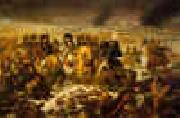 |
Baron Antoine-Jean Gros
|
|
1771-1835
French
Baron Antoine-Jean Gros Galleries
The son of a painter, Antoine Jean Gros was born in Paris on March 16, 1771. At the age of 14 he entered the studio of Jacques Louis David, the acknowledged leader of the classical revival. Although his own work became radically different from David's, he maintained a lifelong respect for his teacher and envisioned himself as the upholder of the Davidian tradition.
In 1787 Gros entered the Acad??mie de Peinture, and when the Acad??mie dissolved in 1793 (a result of the French Revolution) he went to Italy. He met Josephine Bonaparte in Genoa in 1796, and she introduced him to Napoleonic society. Gros entered Napoleon's immediate entourage and accompanied him on several north Italian campaigns. Gros also became involved with Napoleon's program of confiscating Italian art for removal to France.
Gros returned to Paris in 1800 and began to show his Napoleonic paintings in the annual Salons. The most famous of these are the Pesthouse at Jaffa (1804) and Napoleon at Eylau (1808). These works served to deify Napoleon, showing him engaged in acts of heroism and mercy. Stylistically, the paintings were revolutionary:their exotic settings, rich color, agitated space, and general penchant for showing the gruesome specifics of war and suffering differed radically from the cool generalizations of Davidian classicism that Gros had learned as a student. The presentation of contemporary historical events was also new, a harbinger of the realism that developed steadily during the first half of the 19th century in French, American, and English painting. Finally, the emphatic emotionalism of Gros's art established the foundation of romantic painting that Th??odore G??ricault and Eug??ne Delacroix developed after him.
Unlike that of some of his countrymen (David is a case in point), Gros's position did not suffer after the fall of Napoleon. Gros painted for the restored monarchy, for instance, Louis XVIII Leaving the Tuileries (1817), and he decorated the dome of the Panth??on in Paris with scenes of French history (1814-1824). For this Charles X made him a baron in 1824. But these works lack the zest and commitment of Gros's Napoleonic period, perhaps because they were not based on the immediate kinds of historical experiences that had inspired the earlier paintings.
Although marked by considerable public success, Gros's later career was in many ways acutely troubled. Basically, he could not resolve his personal esthetic theories with his own painting or with the work of his younger contemporaries. To the end Gros wished to propagate the classicism of David, and he took over David's studio when the master was exiled in 1816. By the 1820s, however, the revolutionary romanticism of G??ricault and Delacroix, among others, had clearly begun to eclipse classicism, and Gros found himself fighting a lonely and losing battle for conservatism. Ironically, he was fighting a trend that his own best work had helped to originate. As he persisted, moreover, his own painting began to show a diffident mixture of classic and romantic attitudes. Thus, while he was inherently a romantic, he tragically came to doubt himself. Gros died on June 26, 1835, apparently a suicide. |
|
 |
Baron Francois Gerard
|
|
1770-1837
French
Baron Francois Gerard Galleries
French portrait and historical painter, b. Rome. In Paris, after brief study under Pajou and others, he became a favorite pupil of J. L. David, who influenced such works as Psyche Receiving the Kiss of Cupid and Daphnis and Chloe, both in the Louvre. As a leading portraitist, Gerard was patronized by the court during the Empire and the Bourbon restoration. His portrait of Mme Recamier, of this period, is in the Louvre. Louis XVIII appointed him court painter in 1814. Many examples of his historical paintings are in the Versailles Museum. His portrait of the Countess Regnault de Saint-Jean-d Angely (1798; Louvre) exemplifies his style of studied elegance and meticulous finish. |
|
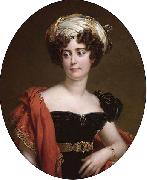 |
Baron Gerard
|
|
There have been three baronies created for descendants of the Gerard family who resided at Bryn, Ashton in Makerfield, Lancashire and Kingsley, Cheshire in the 13th century.
The title Baron Gerard of Gerards Bromley, was created in the Peerage of England on 21 July 1603 for Sir Thomas Gerard (d. 1617), son of Sir Gilbert Gerard (d. 1593) Attorney General between 1559 and 1581 and Master of the Rolls in 1581, who acquired estates at Gerards Bromley and Hilderstone, Staffordshire. The first Baron was Lord President of Wales between 1610 and 1617. The barony passed in direct line of succession until the death of the fifth Baron in 1684 when it passed to his second cousin Charles, and upon his death without a male heir , to his brother Philip Gerard, a Jesuit priest who died childless in 1773 when the barony expired.
The title of Baron Gerard of Bryn in the County Palatine of Lancaster, was created in the Peerage of the United Kingdom in 1876 for Sir Robert Gerard, 13th Baronet. The title followed the line of the first Baron's eldest son until the death of the latter's grandson, the fourth Baron, in 1992. He was succeeded by his second cousin once removed, the fifth and present holder of the barony. He is the great grandson of Captain the Hon. Robert Joseph Gerard-Dicconson, second son of the first Baron.
A Gerard Baronetcy had been created in the Baronetage of England in 1611 for Thomas Gerard, Member of Parliament for Liverpool, Lancashire, and Wigan who was a direct descendant of the family of Bryn. He was succeeded by his son, the second Baronet. He also represented Liverpool in the House of Commons. His son, the third Baronet, was a Royalist during the Civil War and spent a large part of his estate in in his support for King Charles I. His great-great-great-grandson was the aforementioned thirteenth Baronet, who was elevated to the peerage in 1876.
For the title Baron Gerard of Brandon, in the County of Suffolk, created in 1645 for a great-grandson of Sir Gilbert Gerard (mentioned above), see Earl of Macclesfield.
|
|
 |
baron grimm
|
|
German critic. He worked as a diplomat in Paris from 1749. Influenced by the Encyclopedists, he favoured the use of the Italian style in French operas (especially those of Rameau); in the Querelle des Bouffons of the 1750s he rejected all French music in favour of Rousseau, writing the satirical tract Le petit proph??te de Boehmischbroda (1753) and other works. He was a friend to the visiting Mozart family, 1763-4 and 1778.
|
|
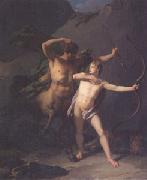 |
Baron Jean-Baptiste Regnault
|
|
Paris 1754-1829
French painter. His first teacher was the history painter Jean Bardin, who took him to Rome in 1768. Back in Paris in 1772, he transferred to the studio of Nicolas-Bernard Lepicie. In 1776 he won the Prix de Rome with Alexander and Diogenes (Paris, Ecole N. Sup. B.-A.) and returned to Rome, where he was to spend the next four years at the Academie de France in the company of Jacques-Louis David and Jean-Francois-Pierre Peyron. While witnessing at first hand Peyron's development of a manner indebted to Poussin and David's conversion to Caravaggesque realism, Regnault inclined first towards a Late Baroque mode in a Baptism of Christ (untraced; recorded in two sketches and an etching), then, in Perseus Washing his Hands (1779; Louisville, KY, Speed A. Mus.), to the static Neo-classicism of Anton Raphael Mengs. |
|
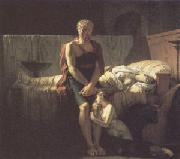 |
Baron Pierre Narcisse Guerin
|
|
Paris 1774-Rome 1833
French painter. He won enthusiastic recognition in 1799 for his Marius Sextus (Louvre). A defender of the classicism of J. L. David, he became director of the École de Rome in 1822. He counted among his pupils Delacroix, G??ricault, and Ary Scheffer, who were to launch the romantic school. |
|
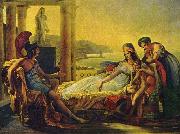 |
Baron Pierre-Narcisse Guerin
|
|
(13 May 1774 - 6 July 1833) was a French painter.
Guerin was born in Paris.
A pupil of Jean-Baptiste Regnault, he carried off one of the three grands prix offered in 1796, in consequence of the competition not having taken place since 1793. In 1799, his painting Marcus Sextus (Louvre) was exhibited at the Salon and excited wild enthusiasm. Part of this was due to the subject - a victim of Sulla's proscription returning to Rome to find his wife dead and his house in mourning - in which an allusion was found to the turmoil of the French Revolution.
Guerin on this occasion was publicly crowned by the president of the Institute, and went to Rome to study under Joseph-Benoît Suvee. In 1800, unable to remain in Rome on account of his health, he went to Naples, where he painted the Grave of Amyntas. In 1802 Guerin produced Phaedra and Hippolytus (Louvre); in 1810, after his return to Paris, he again achieved a great success with Andromache and Pyrrhus (Louvre); and in the same year also exhibited Cephalus and Aurora (Louvre) and Bonaparte and the Rebels of Cairo (Versailles). These paintings suited the popular taste of the First Empire, being highly melodramatic and pompously dignified.
The Restoration brought to Guerin fresh honours; he had received from the first consul in 1803 the cross of the Legion of Honour, and in 1815 Louis XVIII named to the Academie des Beaux-Arts. His style changed to accord with popular taste. In Aeneas Relating to Dido the Disasters of Troy (Louvre), Guerin adopted a more sensuous, picturesque style.
Guerin was commissioned to paint for the Madeleine a scene from the history of St Louis, but his health prevented him from accomplishing what he had begun, and in 1822 he accepted the post of director of the French Academy in Rome, which in 1816 he had refused. On returning to Paris in 1828, Guerin, who had previously been made chevalier of the order of St. Michel, was ennobled. He now attempted to complete Pyrrhus and Priam, a work which he had begun at Rome, but in vain; his health had finally broken down, and in the hope of improvement he returned to Italy with Horace Vernet. Shortly after his arrival at Rome Baron Guerin died, on the 6th of July 1833, and was buried in the church of La Trinite de Monti by the side of Claude Lorrain.
|
|
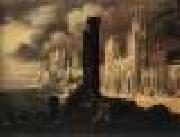 |
BARRA, Didier
|
|
French painter (b. 1590, Metz, d. 1644, Napoli
French painter, active in Italy. He was for a long time confused with FRAN?OIS DE NOM?, and the work of both artists was thought to be by a Mons? Desiderio, a 'highly praised painter of perspectives and city scenes' (de Dominici). It is now generally accepted that Mons? Desiderio was the pseudonym of Didier Barra (1982 exh. cat.), son of Cl?ment Barra. Didier Barra left Metz probably c. 1608, when his name appeared for the last time in the city archives. From c. 1630 he was active in Naples, where he came into contact with landscape and townscape painters from northern Europe. De Dominici wrote that he was associated with Belisario Corenzio. The point of departure in reconstructing Barra's oeuvre is the Panoramic View of Naples (Naples, Mus. N. S Martino), which is signed and dated Desiderius Barra ex civitate Methensi in Lotharingia, F. 1647. The picture is a precise and panoramic view of Naples from the sea, from a single viewpoint, enriched by lively brushwork and with spirited scenes of shipping in the foreground. Its topographical precision suggests that Barra was influenced by the engravings of large views of Naples made by Alessandro Baratta ( fl 1629-30), and he may himself have trained as a cartographer. On the basis of this picture, several views of Naples have been attributed to Barra. |
|
 |
Barry, James
|
|
Dutch Baroque Era Painter, 1627-ca.1683
Studied under Otto Marseus van Schrieck.
Students included Rachel Ruysch.
|
|
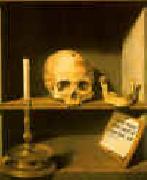 |
Barthel Bruyn
|
|
1493-1555 German
German Renaissance painter, active in Cologne from 1515. Known especially for his portraits, which combine Northern realism with Italian-inspired monumentality and breadth, Bruyn also painted religious works such as the high altar at Essen Cathedral (1522). A portrait of a man and three religious works are in the Philadelphia Museum; many of his works are in Germany. |
|
|
|
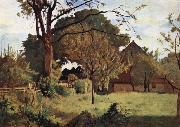 |
Barthelemy Menn
|
|
(20 May 1815 - 10 October 1893) was a Swiss painter and draughtsman who introduced the principles of plein-air painting and the paysage intime into Swiss art.
Menn was born in Geneva as the youngest son of four to Not (Rhaeto-Romance language form for Louis) Menn, a confectioner from Scuol in the canton of Grisons, and Charlotte-Madeleine-Marguerite Bodmer, the daughter of a wealthy farmer from Coinsins in the Canton de Vaud. Already at the age of twelve, Menn took drawing lessons from the little known Jean Duboi (1789-1849), and later, he entered the drawing school of the Geneva Arts Society. The repeated claim that he was also a pupil of the famous enameller Abraham Constantin (1785-1855) appears to be erroneous. In 1831, Menn was second in the annual drawing competition of the Geneva Art Society. The following year, he entered the studio of the Swiss history painter Jean-Leonard Lugardon (1801-1884), who was a pupil of Baron Gros(1771-1835) and acquainted with Jean-Auguste-Dominique Ingres (1780-1867). There, Menn was educated in figure drawing and composition before heading for Paris, where, in fall 1833, he entered the studio of Ingres. He was, therefore, no beginner when meeting the master, but needed some polishing and refinement in his art. In a letter to his friend Jules Hebert, Menn reported on the new situation: eEverybody, even the eldest in the studio tremble before Mr. Ingres. One fears him a lot in such a way that his corrections have a great impact. He is of an extreme sensibility,e while the education in Ingrese studio has been described by Theophile Silvestre, as follows: 'The students spend half of their time studying nature and half studying the masters among which they are especially attached to Phidias, the bas-reliefs of the Parthenon, classical sculpture in general.e This explains why among Menn's early works there are many copies after the Parthenon frieze that was accessible in Paris in a set of plaster casts at the Ecole des Beaux-Arts since 1816. (Fig. 2). Menn also copied several works by Raffael, Titian (Fig. 3), Veronese and Rubens in the Louvre, and works by Ingres.
When the latter decided to give up his studio to take the post as director of the French Academy in the Villa Medici in Rome, Menn returned to his grandparents in Coinsins before following his master in fall 1834. His journey led him first via Milan to Venice, where he met briefly his compatriot Louis-Leopold Robert (1798-1835), and where he would copy works by Titian and Tintoretto. He then travelled via Padua and Bologna to Florence, where he met old classmates from Ingrese studio, and arrived finally in Rome in spring 1835. There, Menn copied works by Raphael and Michelangelo, but he also started to produce extraordinary fresh small landscape paintings in the open air. In summer 1836, he visited the Campagna, Capri and Naples, where too he drew and painted landscapes directly from nature, and copied classical antiquities from Pompeii as well as Giovanni Bellini's Transfiguration in the Museo Borbonico. When back in Rome, he produced history - and genre paintings, of which in 1837, he sent 'Solomon presented to Wisdom by his Parents' (Salomon presente e la sagesse par son pere et sa mere; Fig.N) to the annual Salon in Geneva. Menn returned via Florence, Siena and Viterbo to Paris in late 1838, where he exhibited at the Salon from 1839 to 1843, and where he became the drawing master of Maurice Dudevant, the son of George Sand. In her circle, he became acquainted with Eugene Delacroix (1798-1863) who wanted to employ him as an assistant while working on the decoration of the cupola of the library in the Palais du Luxembourg. At the same time, Menn got to know the painters of the Barbizon School, and especially Charles Daubigny (1817-1878). Most importantly, however, Menn became friends with Camille Corot (1796-1875), who, from 1842 onwards, visited Switzerland frequently. It was also in Paris that he became acquainted with members of the Genevan Bovy family who followed the utopian socialist ideas of Charles Fourier.
|
|
|
|
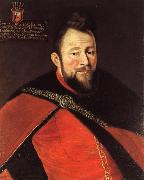 |
Bartholomaus Strobel
|
|
(Breslau 1591-1647 Thorn) was a German baroque painter from Silesia who worked in Poland.
He studied art in the studio of his father. He spent time in Vienna and in Prague. In 1633 he settled in Gdansk and in 1637 operated in Elbing, and thereafter in Torun.
According to Houbraken he received the Dutch painter Gillis Schagen in Elbing in 1637. Strobel was court painter to the emperor at that time, and later became court painter to Władysław IV Vasa, King of Poland.Schagen painted a portrait of the King of Poland to "prove his mastership of the art" for him.
According to the RKD he worked mostly in Prague.
He produced royal court paintings and paintings for the chapel of St.. Kaźmirza in Vilna, (1636-37), and religious paintings in Torue in 1634.
|
|
 |
Bartholomeus Breenbergh
|
|
(before 13 November 1598 - after 3 October 1657) was a Dutch painter born in Deventer.
Breenbergh established himself in Amsterdam and then in 1619 went to Rome. There he lived and worked with the Flemish painter Frans van de Kasteele and was heavily influenced by another Fleming, the landscape painter Paul Bril. From 1623, however, he came completely under the spell of Italian landscapes by the somewhat older Cornelis van Poelenburgheindeed, the works of Breenbergh and van Poelenburgh are sometimes very difficult of tell apart. Breenbergh in his turn influenced the French painter Claude Lorrain. Breenbergh was one of the founders of the Bentvueghels, where he was nicknamed "het fret".
In 1633 Breenbergh returned to Amsterdam, where he remained until his death, and where he made paintings and etchings of Italian buildings. There he was influenced by the pre-Rembrandtists such as Pieter Lastman and Nicolaes Moeyaert, but he placed their Biblical and mythological scenes in Italian landscapes.
|
|
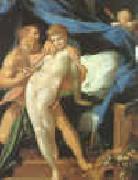 |
Bartholomeus Spranger
|
|
1546-1611
Flemish
Bartholomeus Spranger Gallery
Bartholomeus (Bartholomaeus) Spranger (21 March 1546??August 1611) was a Flemish Mannerist painter, draughtsman, and etcher. He was born in Antwerp.
In 1565, he traveled to Paris and Italy after finishing his studies. He worked on wall paintings in various churches. At Rome, Pope Pius V appointed him court painter in 1570. In 1581 he was appointed to the Prague court of Rudolf II, Holy Roman Emperor.
Hendrik Goltzius made engravings of his paintings, thus increasing Spranger's fame. Spranger's Mannerist paintings depict nudes in various complex poses.
He died in Prague. |
|
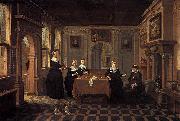 |
Bartholomeus van Bassen
|
|
(1590 - 1652) was a Dutch Golden Age painter and architect.
Van Bassen was born in Antwerp. Little is known of his early life, but according to the RKD he became a member of the Delft Guild of St. Luke in 1613. In 1622 he moved to the Hague, where he became a member of the The Hague Guild of St. Luke two years later and where he became dean in 1627 and headman in 1636 and 1640. He is known for his architectural works, sometimes with staffage by the painters Anthonie Palamedesz, Esaias van de Velde, and Jan Martszen de Jonge. |
|
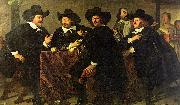 |
Bartholomeus van der Helst
|
|
1613-1670
Dutch
Bartholomeus Van Der Helst Galleries
Dutch painter. He was the son of a Haarlem inn-keeper and presumably undertook part or all of his training in Amsterdam. His earliest works suggest that the painter Nicolaes Eliasz. Pickenoy was his master. Although van der Helst had probably already established himself as an independent master by the time he married Anna du Pire in Amsterdam in 1636, his earliest known work, a portrait of The Regents of the Walloon Orphanage, Amsterdam (Amsterdam, Maison Descartes), dates from 1637. Stylistically it is close to the work of Pickenoy. His portrait of a Protestant Minister of 1638 (Rotterdam, Boymans-van Beuningen) reveals the influence of Rembrandt. The young artist must have risen rapidly to fame in Amsterdam, for as early as 1639 he received the prestigious commission for a large painting for the Kloveniersdoelen (Arquebusiers or Musketeers Hall): The Civic Guard Company of Capt. Roelof Bicker and Lt Jan Michielsz. Blaeuw (Amsterdam, Rijksmus.), which formed part of the same series as Rembrandt Night Watch (Amsterdam, Rijksmus.). Van der Helst may not have completed this commission until 1642 or 1643. The ingenious arrangement of the figures in a broad composition shows the artist special talent for composing large groups. Pickenoy influence is less noticeable here than in the portrait of 1637; the self-assured poses of the individual figures were to become a characteristic feature of van der Helst work. The successful execution of this portrait established van der Helst reputation: from 1642, when he began to receive an increasing number of commissions for individual portraits, until 1670 he was the leading portrait painter of the ruling class in Amsterdam. From 1642 his technique in portrait painting gradually became more fluent and the rendering of costume materials more detailed. Some typical portraits of his earlier period are those of Andries Bicker (Amsterdam, Rijksmus.), his wife Catharina Gansneb Tengnagel (Dresden, Gemeldegal. Alte Meister) and their son Gerard Bicker (Amsterdam, Rijksmus.), all of 1642, and the Portrait of a Young Girl (1645; London, N.G.). In 1648 van der Helst painted a second civic guard portrait, The Celebration of the Peace of M?nster at the Crossbowmen Headquarters, Amsterdam (Amsterdam, Rijksmus.), a superbly composed and well painted portrait that, until the late 19th century, was considered one of the masterpieces of the Golden Age but later lost popularity because of its smooth and modish execution. It can nevertheless still be regarded as one of the most important group portraits of the 17th century. Its technical perfection, characterized by a well-modelled rendering of the figures and a smooth handling of the brush, dominated the rest of van der Helst oeuvre. |
|
 |
Bartolo di Fredi
|
|
Italian Gothic Era Painter, ca.1330-1410
He had a large studio and was one of the most influential painters working in Siena and the surrounding towns in the second half of the fourteenth century. He registered in the Guild of that city in 1355; he had several children, who all died before him, with the exception of Andrea Bartoli. He was the companion of Andrea Vanni from 1353, and helped decorate the Hall of Council at Siena, in 1361. In 1362 he went to San Gimignano, where, by 1356, he had painted the entire side of the left aisle of the Pieve with scenes drawn from the Old Testament. In 1366 the Council of the city of Gimignano ordered a painting, representing Two Monks of the Augustine Order to be placed in the Palazzo Pubblico, in order to commemorate the settlement of some disputes which had long existed between that order and the city. In the early part of 1367 he returned to Siena, and was employed with Giacomo di Mino in the decorations of the cathedral. In 1372 he rose to a position in the government of the city, and was sent to welcome the new Podesta, on his approach to Siena. In 1381 he was himself made a member of the Council, and in 1382 he executed the Descent from the Cross now in the Sacristy of San Francesco, Montalcino. The same church also possesses panels painted by him containing the Baptism of Christ figures of SS. Peter, Paul, and Francis, and five scenes from the life of St. Philip of Montalcino. In 1389, Bartolo, assisted by Luca Thome, painted the altar-piece for the Shoemakers Company, in the Cathedral, and continued from that year until his death to furnish altar-pieces for the cathedral and other churches of Siena, which have now all disappeared.
His style is marked by the rejection of the concrete figures associated with Pietro Lorenzetti to instead favor flatter decorative otherworldly compositions in the manner of Simone Martini and Duccio. He combined a spirit of fantasy with anecdotal details.
The Honolulu Academy of Arts, the Los Angeles County Museum of Art, the Louvre, the Metropolitan Museum of Art, the Mus??e des Beaux-Arts (Chambery, France), the Musee du Petit Palais (Avignon, France), Museo Civico e Diocesano d Arte Sacra (Montalcinothe, Italy), the Museum of Fine Arts, Boston and the University of Virginia Art Museum are among the public collections having paintings by Bartolo di Fredi. |
|
|
|
|
|
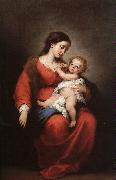 |
Bartolome Esteban Murillo
|
|
Spanish
1618-1682
Bartolome Esteban Murillo Galleries
Murillo began his art studies under Juan del Castillo in Seville. Murillo became familiar with Flemish painting; the great commercial importance of Seville at the time ensured that he was also subject to influences from other regions. His first works were influenced by Zurbaran, Jusepe de Ribera and Alonso Cano, and he shared their strongly realist approach. As his painting developed, his more important works evolved towards the polished style that suited the bourgeois and aristocratic tastes of the time, demonstrated especially in his Roman Catholic religious works.
In 1642, at the age of 26 he moved to Madrid, where he most likely became familiar with the work of Velazquez, and would have seen the work of Venetian and Flemish masters in the royal collections; the rich colors and softly modeled forms of his subsequent work suggest these influences. He returned to Seville in 1645. In that year, he painted thirteen canvases for the monastery of St. Francisco el Grande in Seville which gave his reputation a well-deserved boost. Following the completion of a pair of pictures for the Seville Cathedral, he began to specialise in the themes that brought him his greatest successes, the Virgin and Child, and the Immaculate Conception.
After another period in Madrid, from 1658 to 1660, he returned to Seville. Here he was one of the founders of the Academia de Bellas Artes (Academy of Art), sharing its direction, in 1660, with the architect, Francisco Herrera the Younger. This was his period of greatest activity, and he received numerous important commissions, among them the altarpieces for the Augustinian monastery, the paintings for Santa Mar??a la Blanca (completed in 1665), and others. |
|
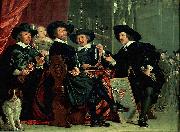 |
Bartolome Perez
|
|
(1634-1693) was a Spanish painter of the Baroque period.
Born in Madrid, he became the son-in-law and pupil of the painter Juan de Arellano. Known as a painter of flowers and still life, known as bodegones. He also painted scenography for performances at the theater of Buen Retiro, for which he was named painter of the King without salary in January of 1689. He died after falling from a scaffold used to paint the ceiling of the palace of Monteleon, and was buried in the church of San Ildefonso.
|
|
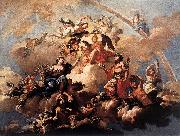 |
Bartolomeo Altomonte
|
|
Bartolomeo Altomonte, also known as Bartholomäus Hohenberg (24 February 1694 - 11 November 1783), was an Austrian baroque painter who specialized in large scale frescoes. He was the son of Martino Altomonte, also a painter. |
|
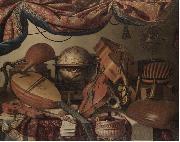 |
Bartolomeo Bettera
|
|
Bartolomeo Bettera (Bergame, 28 août 1639 - Milan, apres 1688) est un peintre italien qui a ete actif dans la seconde moitie du XVIIe sie-le dans la peinture de nature morte. |
|
|
|
 |
Bartolomeo Bimbi
|
|
1648-1723,was a Florentine painter of still lifes spurred by his patrons including Cosimo III, Grand Duke of Tuscany to paint large canvases of flora and fauna for the Medici Villa dell'Ambrogiana and della Topaia, now conserved in the Pitti Palace and the Museo Botanico dell'Universita. He partly was following the tradition of Jacopo Ligozzi. He was a pupil of Lorenzo Lippi and Onorio Marinari. Others claim he was a pupil of Angelo Gori |
|
|

